Pallet Changing Machine: What’s the Safest Method to Replace Contaminated Pallets?
Contaminated pallets are a silent threat in any production or warehouse facility. A single splintered, dirty, or damp wooden pallet can introduce contaminants, halt a shipment, and lead to costly product recalls, especially in sensitive industries like food and pharmaceuticals. You might be manually transferring loads to clean pallets, but this process is slow, physically demanding, and dangerously prone to worker injury or product damage. Every manual transfer is a gamble, risking both your people's safety and your bottom line. It's a persistent operational headache that only gets worse as compliance standards tighten and production demands increase.
The single safest method to replace contaminated pallets is by using a 180-degree pallet inverter. This type of pallet changing machine securely clamps the entire load, rotates it safely, and allows for the quick and easy replacement of the old pallet with a new, clean one. This process virtually eliminates manual lifting, minimizes the risk of product damage, and provides a controlled, efficient, and repeatable solution for maintaining hygiene and safety standards.
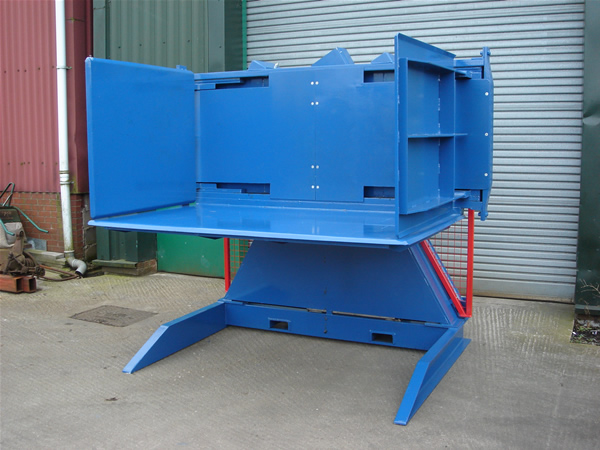
But simply knowing the best type of machine is only the beginning. Understanding the deep-seated risks of your current methods and the specific features that make a new machine truly safe is critical to making a wise investment. As someone who has spent over two decades designing, building, and implementing these systems, I want to walk you through the practical considerations. We'll explore why manual methods are so flawed and how to choose a machine that becomes a true asset for your operation, not just another piece of equipment.
Why is Manual Pallet Changing a High-Risk Gamble?
You see your team manually restacking goods from one pallet to another, and on the surface, it looks like a simple, low-cost solution. But what are the hidden costs you're not seeing? Every time a worker bends down to lift a heavy box, the risk of a back injury skyrockets. Every stack they build by hand is a potential tower of instability, one wrong move away from collapsing and destroying valuable product. This seemingly simple task is a constant drain on your resources, creating bottlenecks and exposing your business to unacceptable levels of risk in terms of safety, quality, and efficiency.
Manual pallet changing is a high-risk gamble because it directly exposes your company to three major liabilities: severe musculoskeletal injuries to your workers, a high probability of product damage due to unstable handling, and significant operational inefficiencies that slow down your entire supply chain. These combined risks often outweigh any perceived cost savings from avoiding automation.
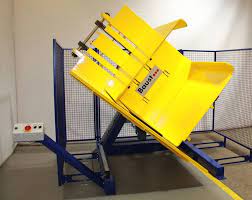
Let's dive deeper into why this manual process is so problematic. For a business leader like Javier, who is focused on stability and cost control, these are not minor issues; they are strategic vulnerabilities. From my experience on the factory floor, I have seen these risks play out time and time again.
The True Cost of Worker Injury
When an employee manually transfers a heavy load, they are performing one of the most physically risky tasks in a warehouse. The repeated bending, lifting, and twisting can lead to chronic back pain, hernias, and other musculoskeletal disorders (MSDs). A single serious injury can have staggering financial consequences. You are not just looking at immediate medical bills. You have to consider the costs of workers' compensation claims, which can increase your insurance premiums for years. There is also the cost of lost productivity. The injured employee is out, and you may need to hire and train a temporary replacement. Even when they return, they might be on restricted duties, further impacting efficiency. This constant threat of injury also affects team morale. A workplace perceived as unsafe will struggle with higher employee turnover and lower engagement.
The Domino Effect of Product Damage
A manual restack is inherently unstable. Unlike a machine that applies even pressure, a human hand cannot perfectly balance a tall stack of boxes. I've seen entire pallets of high-value electronics and pharmaceuticals end up on the floor because of a single misplaced box during a manual transfer. The loss is never just the cost of the destroyed goods. You must factor in the labor cost for the cleanup. You have to account for the production delay as your team stops what they are doing to deal with the mess. And most importantly, you have to consider the potential damage to your customer relationships if the incident causes a delayed or incomplete order. This type of unpredictable loss makes it difficult to manage inventory and meet production targets, directly challenging the goal of improving efficiency and lowering operational costs.
The Inefficiency and Contamination Trap
Manual pallet changing is incredibly slow. A two-person team might take 10-15 minutes to transfer a single pallet load. If you need to swap 50 pallets a day, that's over 10 hours of labor dedicated to a low-value, high-risk task. This creates a major bottleneck in your logistics flow. Furthermore, every time a product is handled manually, the risk of contamination increases. Hands can transfer dirt, workers can accidentally cough or sneeze on products, and the prolonged exposure time in an open environment is a liability. For industries with strict hygiene standards, like food or pharma, this manual process is a compliance nightmare waiting to happen.
| Metric | Manual Pallet Changing | Automated Pallet Changing |
|---|---|---|
| Time per Pallet | 10-15 minutes (2 operators) | < 60 seconds (1 operator) |
| Injury Risk | High (MSDs, strains) | Extremely Low |
| Product Damage Rate | Moderate to High | Very Low |
| Contamination Risk | High (direct handling) | Low (minimal contact) |
| Process Consistency | Low (depends on operator) | High (repeatable cycle) |
How Do Pallet Inverters Enhance Safety and Efficiency?
You know the manual method is flawed, but you're hesitant to invest in a large piece of machinery without understanding exactly how it solves the problem. It's easy to look at a pallet inverter and see a complex machine, but the concept is beautifully simple and effective. Imagine being able to swap a pallet without a single box being lifted by hand. Think about turning a 15-minute, two-person job into a 60-second, one-person task. A pallet inverter isn't just a machine; it's a strategic tool that fundamentally changes your workflow to be safer, faster, and more reliable.
Pallet inverters enhance safety and efficiency by using a powerful clamping system to secure the load, a controlled 180-degree rotation to use gravity for the transfer, and automation to streamline the entire process. This combination eliminates dangerous manual lifting, protects products from damage, and drastically reduces the time and labor required for each pallet exchange.
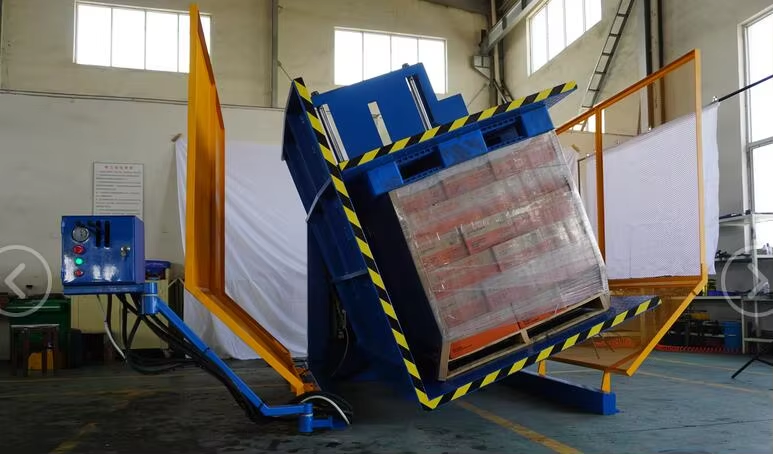
Let's break down the mechanics of how these machines achieve such a significant improvement. When I first transitioned from being a factory employee to designing these systems, my focus was always on creating a process that was not just faster, but fundamentally safer and more foolproof than any manual alternative.
The Clamping Mechanism: A Protective Cocoon
The first and most critical step in the pallet inverter's process is securing the load. The machine is equipped with two powerful clamping plates that move in to hold the product from the top and bottom. Modern systems use pressure-sensing technology. This means the machine can be programmed for different load types. For sturdy goods like steel coils or canned beverages, it can apply high pressure for maximum stability. For fragile items like glass bottles or sensitive electronics, it applies just enough pressure to hold the load securely without causing any crushing or damage. This intelligent clamping creates a protective cocoon around your product, ensuring it remains perfectly stable throughout the entire transfer process. It removes the human element of judging stability and replaces it with precise, repeatable engineering.
The 180-Degree Rotation: Using Gravity as a Tool
Once the load is clamped, the machine performs a smooth, controlled 180-degree rotation. Your pallet of goods is now upside down, with the original, contaminated pallet sitting on top. The clamping plates continue to hold the load securely. The operator can then simply lift off the old pallet. A new, clean pallet (e.g., a plastic or sanitized pallet) is placed on top of the inverted load. The machine then rotates back 180 degrees to its original position. The clamping plates release, and the load is now sitting perfectly stacked on the new, clean pallet. This process uses gravity to its advantage, ensuring the product stack is never disturbed. The layers of boxes or bags remain in the exact same order and position as they started. There is no restacking, no shifting, and therefore, no risk of a collapse.
Quantifying the Leap in Efficiency
The impact on your operational efficiency is immediate and dramatic. As we noted, a manual swap is a significant time sink. A standalone pallet inverter, operated by a single forklift driver, can complete a full cycle in about one minute. This represents a more than 90% reduction in time and a 50% reduction in labor for the task. For an operation like Javier's, which handles a high volume of materials, this is a game-changer. It eliminates bottlenecks at shipping and receiving docks. It allows your workforce to be reallocated from dangerous, low-value manual labor to more productive, value-added tasks. This boost in throughput directly contributes to higher capacity utilization and lower operational costs, key goals for any competitive manufacturing plant.
What Are the Key Safety Features to Look for in a Pallet Changer?
You are convinced that a machine is the right path forward, and you are ready to start looking at options. But a quick search reveals many different models and manufacturers, all claiming to be safe. How do you cut through the marketing noise and identify the features that truly protect your people and your products? Choosing a machine without the right safety systems is a false economy. It's a capital investment that could fail to solve your core problem or, even worse, introduce new hazards into your facility.
When evaluating a pallet changer, the most critical safety features to look for are comprehensive perimeter guarding with light curtain-controlled access, dual-channel safety circuits that are fail-safe, adjustable pressure clamping systems to prevent product damage, and robust mechanical locks that prevent movement during power loss or maintenance.
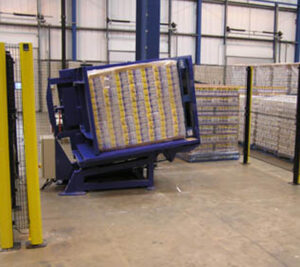
As an engineer who has built these machines from the ground up, I have a non-negotiable checklist of safety features. These are not optional add-ons; they are fundamental requirements for any pallet changing machine that will operate in a modern, safety-conscious factory.
Perimeter Guarding and Access Control
A pallet inverter is a powerful piece of equipment. The operational area must be completely secured to prevent personnel from accidentally entering while the machine is in motion. The gold standard is tall, fixed safety fencing around the entire machine. Access for loading and unloading pallets should be protected by light curtains. These are photoelectric sensors that create an invisible barrier. If a person or forklift breaks this barrier while the machine is in a cycle, it should immediately and safely stop. Any access gates should be fitted with safety interlock switches, which ensure the machine cannot be started while a gate is open. This physical and electronic barrier system is the first line of defense against accidents.
Failsafe Electrical and Mechanical Design
What happens if the power goes out mid-rotation? A poorly designed machine could drop the load, creating a massive safety hazard. A well-designed machine has multiple failsafe systems. Electrically, it should use dual-channel safety circuits. This means critical safety components (like emergency stops and light curtains) have redundant circuits, so a single component failure doesn't lead to an unsafe condition. Mechanically, it should incorporate features like hydraulic hose burst valves, which prevent the clamps from releasing if a hydraulic line fails. It should also have mechanical locks or braking systems that automatically engage in the event of a power failure, holding the load securely in its current position until power is restored and the system can be safely reset.
Intelligent and Gentle Load Handling
Safety isn't just about protecting people; it's also about protecting your product. A key feature here is the adjustable clamping pressure we discussed earlier. But it's more than just a manual dial. Advanced systems can have pre-programmed settings for different SKUs. An operator can simply select the product type from a touchscreen, and the machine automatically applies the correct, pre-tested clamping force. Some machines also feature soft-touch materials on the clamping plates to avoid marking or scuffing sensitive packaging. The rotation itself should be smooth and controlled by a variable frequency drive (VFD), which allows for gentle acceleration and deceleration, preventing shock to the load.
| Safety Feature | Primary Purpose | Why It's Critical |
|---|---|---|
| Perimeter Fencing | Physical Barrier | Prevents unauthorized entry into the machine's operating area. |
| Light Curtains | Access Point Protection | Immediately stops the machine if the entry zone is breached during a cycle. |
| Safety Interlocks | Gate Security | Ensures the machine cannot start or operate if any access gate is open. |
| Dual-Channel Circuits | Electrical Redundancy | Prevents a single point of electrical failure from creating an unsafe state. |
| Hose Burst Valves | Hydraulic Failsafe | Prevents loss of clamping pressure and dropping the load if a hydraulic hose fails. |
| Adjustable Pressure | Product Protection | Prevents crushing or damaging the load by applying the correct force. |
My Insights: Beyond the Machine - A Holistic Approach to Pallet Safety
Over the years, I've sold and installed hundreds of machines. I’ve learned that buying the most advanced pallet changing machine is only half the battle. I've seen companies invest a significant amount of capital in top-of-the-line equipment, only to have it underutilized or involved in a near-miss incident a few months later. Why? Because they treated the machine as a simple plug-and-play solution. They forgot that the most important safety feature isn't on the machine itself; it's the culture and process you build around it.
My deepest insight is that achieving true, sustainable safety in pallet changing requires a holistic approach that integrates the machine, the operator, and the process. The safest method is not just the machine itself, but a combination of the right equipment, rigorous operator training, clear Standard Operating Procedures (SOPs), and a proactive maintenance schedule.
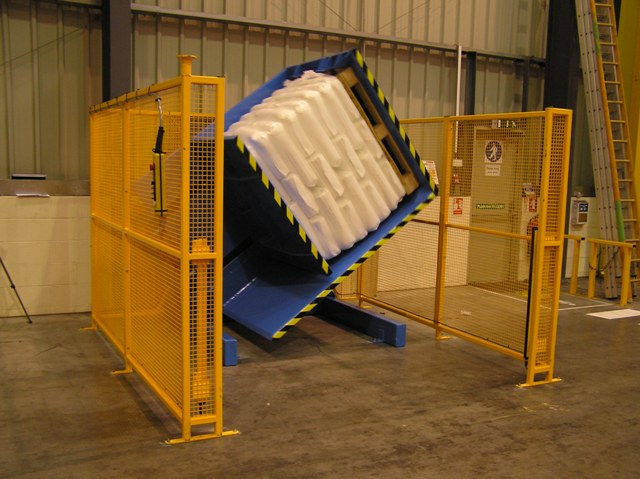
This is where a supplier must become a partner. For a leader like Javier, who is focused on long-term stability and empowering his team, simply delivering a machine to his factory door is not enough. A true partner helps build the ecosystem for success.
The Operator is the Heart of the System
I remember an early installation at a large beverage bottling plant. We installed a state-of-the-art inline pallet inverter. But for the first few weeks, operators were hesitant to use it, often defaulting to the old, manual methods during busy periods. They didn't trust the machine. We realized our job wasn't done. We went back and implemented a hands-on certification program. We didn't just show them which buttons to push. We explained how the safety features worked. We let them see the failsafe systems in action. We empowered them to be the machine's first line of defense, teaching them to listen for unusual sounds or spot minor issues before they became major problems. Once the operators felt ownership and expertise, the machine went from being an intimidating piece of metal to their most trusted tool.
SOPs: The Blueprint for Repeatable Safety
You cannot leave safety to memory or chance. Every facility needs clear, simple, and visual Standard Operating Procedures (SOPs) posted directly at the machine. These documents should be more than just a technical manual. They should be a simple, step-by-step guide:
- Pre-Operation Checklist: (e.g., "Check for hydraulic leaks," "Ensure safety guards are in place.")
- Loading Procedure: (e.g., "Center the pallet on the platform," "Select correct product program.")
- Emergency Procedures: (e.g., "In case of E-stop, follow this reset procedure.")
- Lockout/Tagout (LOTO) for Maintenance: A clear, non-negotiable process for safely powering down the machine before any service.
These SOPs create consistency. It ensures every operator, on every shift, uses the machine in the exact same safe and efficient way. This structured approach is something I know a leader with an engineering background can appreciate.
Maintenance as a Proactive Strategy
Finally, the safest machine is a well-maintained machine. Waiting for something to break is a reactive strategy that leads to downtime and potential safety risks. A strategic partner will help you develop a proactive and predictive maintenance schedule. This includes daily checks by the operator, weekly inspections of safety components, and scheduled servicing of hydraulic and electrical systems. For a data-driven leader like Javier, modern machines can even be equipped with IoT sensors that monitor motor vibration, hydraulic pressure, and cycle counts, feeding data back to your MES. This allows you to predict a potential failure before it happens, scheduling maintenance during planned downtime and pushing your equipment's effective run time closer to that 95% goal.
Conclusion
Replacing contaminated pallets safely is not just about compliance. It is a strategic decision that protects your people, your products, and your profits. The right automated solution is an investment in operational excellence.



